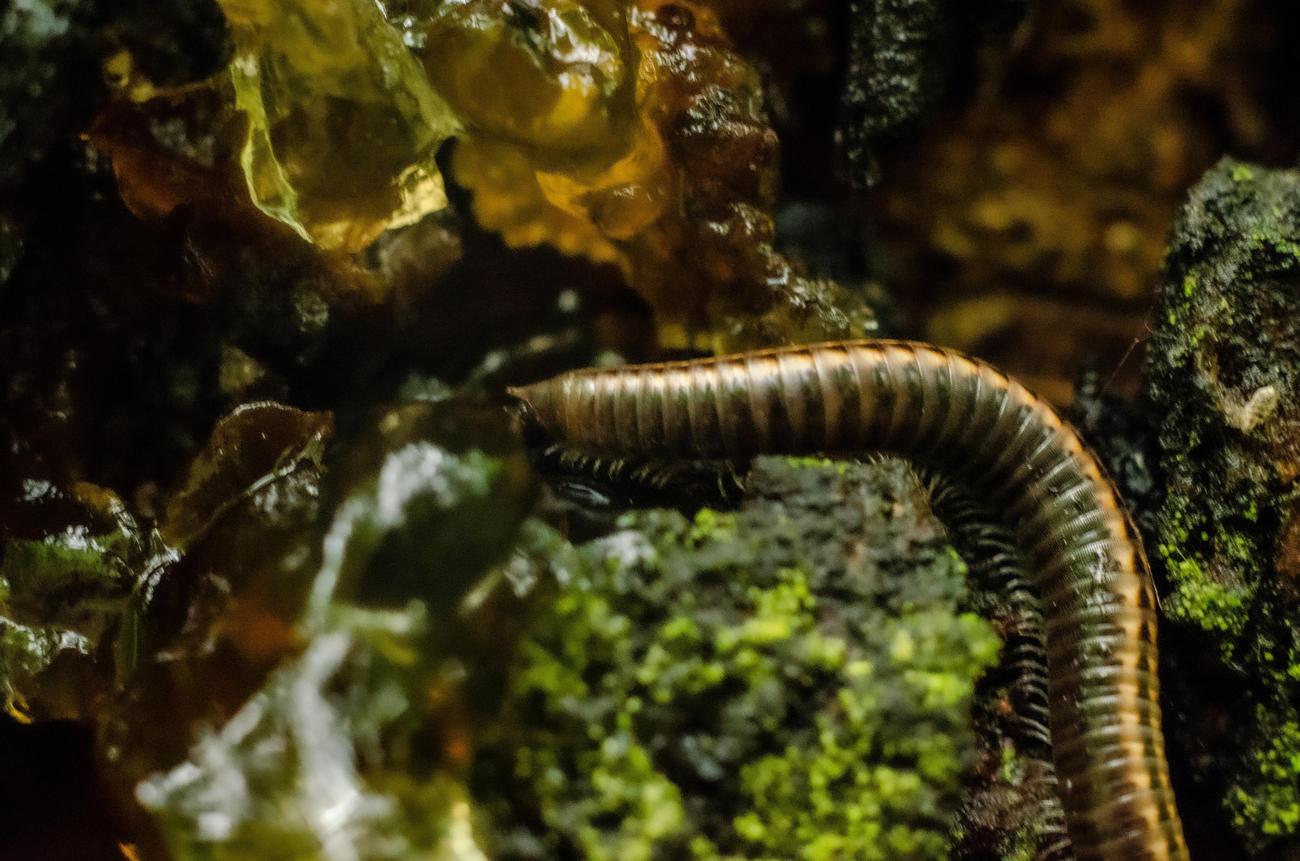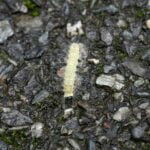Prepare to be amazed as we delve into the captivating world of centipedes! In this article, titled “Fascinating Facts About Centipedes: Discover Their Intriguing Adaptations and Abilities,” we will explore the remarkable traits and abilities that make these multi-legged creatures truly unique. From their venomous nature to their incredible ability to regenerate lost limbs, centipedes have evolved fascinating adaptations that will leave you in awe. So, let’s embark on this enthralling journey and unravel the secrets of these enigmatic arthropods.

Interesting Facts About Centipedes
Centipedes may seem creepy and crawly, but these fascinating creatures are more than just your average household pest. With their segmented bodies and numerous legs, centipedes are unique arthropods that have been around for millions of years. Today, we’ll delve into some intriguing facts about centipedes that will leave you amazed and wanting to learn more about these remarkable creatures.
1. Incredible Adaptations:
Centipedes possess a range of adaptations that allow them to thrive in diverse environments. One remarkable adaptation is their ability to regenerate lost limbs. Much like superheroes of the animal kingdom, centipedes can regrow one or even multiple legs if they happen to lose them during a battle or escape attempt. This incredible regenerative ability ensures their continued mobility and survival.
2. Venomous Wonders:
Centipedes are renowned for their venomous nature, which helps them subdue their prey. However, it’s essential to note that most centipede species pose little to no threat to humans. While their venom can cause pain and localized swelling, severe reactions are rare. So, there’s no need to fear these multi-legged marvels when you come across them in your backyard or garden.
3. Masters of Predation:
Centipedes are voracious carnivores, feeding on a variety of small household pests such as spiders, flies, and even cockroaches. Equipped with specialized mandibles and sharp claws, they capture and immobilize their prey before injecting venom to subdue and digest it. Centipedes play a vital role in keeping pest populations in check, making them beneficial allies in our homes and gardens.
“Centipedes’ ability to regenerate lost limbs is like a superpower, ensuring their mobility and survival.”
“Most centipede species pose little to no threat to humans, so no need to fear these multi-legged marvels!”
“Centipedes are nature’s pest control experts, keeping populations of spiders, flies, and cockroaches in check!”
4. Sensory Wizards:
Contrary to popular belief, centipedes have poor eyesight or even no eyes at all. Instead, they rely on their remarkable antennae to navigate their surroundings and detect their next meal. These antennae are highly sensitive, almost like a superpowered sixth sense, helping centipedes locate prey and avoid obstacles.
5. Life in the Damp:
Centipedes are creatures of moisture and prefer damp environments. You’ll often find them in basements, bathrooms, and other areas with high humidity levels. These resilient arthropods can survive for up to six years, adapting to various climates and habitats. So, while they may seem unwelcome guests to some, they have successfully adapted to make the most of their surroundings.
6. Ancient Guardians:
The history of centipedes dates back a whopping 400 million years, making them one of the oldest living groups of arthropods on Earth. They have witnessed the rise and fall of ancient civilizations, walked alongside dinosaurs, and persevered through countless environmental changes. Centipedes are living fossils, providing us with a glimpse into the ancient world and the extraordinary adaptations that have allowed them to survive for millions of years.
“Centipedes rely on their remarkable antennae, their superpowered sixth sense, to navigate and hunt.”
“Centipedes may prefer damp environments, but their resilience allows them to adapt and thrive in various climates.”
“As ancient guardians, centipedes provide us with a window into the past, having witnessed the rise and fall of civilizations and roamed alongside dinosaurs.”
From their stunning adaptations to their role as nature’s pest control experts, centipedes are truly captivating creatures. These intriguing facts highlight the remarkable abilities and resilience of these ancient arthropods, inviting us to explore the depths of their fascinating world. So, the next time you encounter a centipede, take a moment to appreciate the wonders and surprises it brings to our ecosystem.
“Centipedes, more than just creepy crawlies, are nature’s fascinating wonders, showcasing awe-inspiring adaptations and resilience.”
Interesting Facts About Centipedes
Centipedes are fascinating creatures that often leave people curious about their behavior and characteristics. Have you ever wondered what these creepy crawlers eat? If so, click here to discover what centipedes feast on. You won’t believe the variety of foods that satisfy their hunger!
Another intriguing question is whether or not centipedes bite. If you’re curious to know the answer, click here for a surprising revelation. These creatures might not be as harmless as they seem!
If you’re encountering house centipedes and want to get rid of them, you’ll definitely want to check out this link: how to get rid of house centipedes. Discover effective methods to eliminate these unwanted guests and maintain a pest-free environment.
Now, let’s move on to a fun fact about centipedes. Do you know how many legs these multi-legged insects have? To find out, click here and prepare to be amazed!
As we delve further into the world of centipedes, we can’t help but wonder what they enjoy eating in our homes. Want to know what items entice them? Click here and discover the unexpected food choices that attract house centipedes.
Lastly, for those who are worried about centipedes invading their beds, we have the solution for you. Click here and learn how to protect your sleeping sanctuary from these nocturnal creatures. Say goodbye to unsettling surprises during bedtime!
Remember, centipedes are more than just creepy crawlies. Their eating habits, biting tendencies, and unique legs make them a fascinating topic to explore. So, don’t hesitate to dive deeper into the captivating world of these incredible creatures through the provided links.
6. Centipedes Are Venomous
Centipedes, those fascinating multi-legged creatures, hold a secret power that sets them apart from many other arthropods – their venom! Yes, you heard it right. Centipedes are venomous, and this aspect of their nature adds an extra layer of intrigue to these remarkable beings.
Now, before you start picturing a deadly threat lurking under every rock, let’s delve into the reality of centipede venom and its significance in their world. First things first, it’s important to note that not all centipedes are venomous. In fact, the Scolopendromorpha group, which includes the huge and impressive centipedes you might envision, do not possess venom glands. However, the vast majority of centipede species are indeed venomous.
So, how does centipede venom work? Well, centipedes use their large pincers, known as forcipules, to deliver their potent venom. When hunting, they seize their prey and inject venom, paralyzing or immobilizing it. This venom contains a cocktail of toxins that vary between species, with some centipedes having venom potent enough to subdue prey much larger than themselves.
But fear not! Despite their venomous nature, centipedes pose little to no threat to humans. While their bites can be painful, similar to that of a bee sting, severe reactions are extremely rare. So unless you happen to be a small invertebrate, you can rest assured that centipedes won’t be causing you any harm.
[Quote: “Centipedes, with their venomous pincers, showcase a fascinating world where nature’s weapons are intricately designed for survival and prey capture.”]
On the other hand, for their prey, centipedes’ venom is a formidable weapon. They primarily feed on other invertebrates, such as insects, spiders, and even small crustaceans. Their venom helps them overpower and immobilize their prey, ensuring a successful hunt. It’s all part of their carnivorous nature, honed through millions of years of evolution.
But wait, how do centipedes find their prey in the first place? Unlike humans who rely on sight, centipedes have evolved various methods to sense their prey. Some species rely on chemoreceptors located on their antennae, allowing them to detect chemical signals given off by their potential victims. Others have specialized sensory hairs that can pick up vibrations in the surrounding environment. It’s like having an in-built radar system that helps them locate their next meal.
[Quote: “Centipedes, with their cunning hunting techniques and well-equipped sensory systems, exemplify nature’s true predators, ever ready to seize their unsuspecting prey.”]
Now, let’s consider an intriguing fact about centipedes’ venom: it serves a dual purpose. Not only does it help them capture and immobilize their prey, but it also aids in digestion. You see, centipedes don’t have jaws like we do. Instead, they inject their venom into their prey, liquefying the insides and allowing them to easily consume their meal. It’s like having a built-in blender and digestion system, all in one.
[Quote: “Centipede venom, a masterful tool of capture and digestion, exemplifies the remarkable adaptations that have allowed these creatures to flourish in the world of hunters.”]
As we explore this captivating world of centipedes, it becomes clear that their venomous nature is not something to be feared, but rather admired. It is a testament to their remarkable adaptations and survival strategies. So, the next time you come across a centipede, take a moment to appreciate its skillful use of venom, knowing that it plays a crucial role in their fascinating lives.
[Quote: “In the realm of life’s wonders, centipedes with their venomous arsenal add a touch of intrigue, reminding us of the marvels that lie within the natural world.”]
9. Centipedes Can Regrow Their Legs
Centipedes are truly remarkable creatures, and one of their most astonishing abilities is the power to regrow lost limbs. Just like some superheroes in movies, these multi-legged arthropods have a remarkable regenerative capacity that allows them to continue moving and surviving even after facing predators. However, their regenerative abilities are limited to their legs, not extending to more central structures of their bodies.
When a centipede loses a leg in a battle with a predator, it’s not the end of the world for them. These resilient creatures have a unique way of regaining what they’ve lost. As they grow, centipedes go through a process called molting, where they shed their old exoskeleton and develop a new one. This molting process allows them to grow and develop more pairs of legs each time they molt. So, if a centipede loses a couple of legs, it’s only a temporary setback as it will soon be able to replace them.
Imagine being able to detach and regrow your limbs whenever you’re faced with danger. It’s like having an emergency exit that allows centipedes to escape from predators who might be trying to make a meal out of them. But remember, even with this extraordinary ability, centipedes can only regenerate their legs. If you ever come across a centipede with legs that appear shorter than the others, it’s likely in the process of recovering from a predator attack.
Just like a superhero who can regrow lost limbs, centipedes have an incredible ability to regenerate their legs. Through the molting process, they shed their old exoskeleton and develop new pairs of legs, allowing them to continue their arthropod adventures.
So, how exactly do centipedes accomplish this seemingly miraculous feat of regrowing their legs? Well, it all starts with their unique biology. Centipedes possess a series of specialized cells known as blastema cells that are responsible for the growth and regeneration of lost body parts. These remarkable cells have the ability to differentiate into the necessary tissues and structures needed to replace the missing legs.
With their special blastema cells, centipedes have a built-in regeneration system that allows them to regrow their lost legs. It’s almost like nature’s very own Lego set, where these incredible creatures can rebuild what they’ve lost.
It’s important to note that while centipedes can regrow their legs, their regenerative abilities are limited to external structures like their limbs. They cannot regenerate more central structures of their bodies. Nonetheless, this incredible adaptation has allowed centipedes to thrive and survive in their diverse environments for millions of years.
While centipedes cannot regenerate more central structures of their bodies, such as their internal organs, their ability to regrow legs has undoubtedly contributed to their remarkable survival and success over the course of millions of years.
In conclusion, the ability of centipedes to regrow their lost legs is truly fascinating. Through their unique biology and the process of molting, these incredible creatures can regenerate their limbs and continue on their predatory pursuits. Just like a superhero’s superpower, this ability sets centipedes apart and showcases the amazing adaptations that exist within the natural world.
Centipedes possess a remarkable superpower – the ability to regrow their lost legs. This incredible adaptation allows them to overcome challenges and continue thriving in their environments. It’s just one more reason to be in awe of these incredible creatures that roam our Earth.
Centipedes: Nature’s Unsettling Crawlers
[youtube v=”KHCY9RceDFc”]
Centipedes: Nature’s Unsettling Crawlers-H2
Centipedes are known for evoking a guttural “nope” reaction in most people. These creepy-looking arthropods have been featured in movies to add a touch of tension, and for a good reason. Spanning over 3000 different species, centipedes can be found all around the world, with a preference for warm and temperate climates. In fact, unless you’re one of the few people living in Antarctica, there’s probably a centipede in your house right now, lurking in the shadows. Despite their unsettling appearance, the vast majority of centipedes are harmless to humans. Their bodies consist of a head with a pair of antennae, a pair of legs on each body segment, and an elongated pair of legs on the last segment. Contrary to what their name suggests, centipedes don’t always have a hundred legs. They have an odd number of body segments, resulting in an odd number of legs as well. So, they can have anywhere from a few up to several hundred legs depending on the species. Due to their unique characteristics and hunting strategies, centipedes have become one of nature’s most fascinating creatures.
“In fact unless you’re one of the 4,000 or so people who live in Antarctica, there’s probably a centipede in your house right now.”
“The vast majority of centipedes are harmless to humans.”
Unraveling the Secrets of Centipedes
Centipedes have evolved in various ways throughout their existence, resulting in different forms and behaviors. Some species are born with the exact number of legs they will have throughout their lives, while others gain legs as they molt and grow. Centipedes vary in size, with some as small as a centimeter and others as long as thirty centimeters. However, the majority of centipedes top out at around ten centimeters in length. These fascinating creatures can live for up to ten years, making them one of the longest-living classes of invertebrates.
“Centipedes vary in size, with some as small as a centimeter and others as long as thirty centimeters.”
“There are approximately five orders of centipede, each with its own unique characteristics and adaptations.”
“The most badass order of centipedes, Skolopendra Morpha, contains the giant centipede.”
Diverse Orders and Unique Traits
Among the five orders of centipedes, the one most commonly encountered in households is the Scutigeromorpha, also known as house centipedes. These creatures are incredibly fast, capable of running at a staggering forty centimeters per second. What distinguishes them is the distinct size difference between each pair of legs, with the hindmost pair often being twice as long as the front pair. Their vision is quite limited, composed of compound eyes that can only distinguish between light and dark. This “8-bit vision” allows them to survive in dimly lit environments.
“The Scutigeromorpha order, or house centipedes, are incredibly fast and reside in dark and damp environments.”
“The Lithobiomorpha order, or rock centipedes, don’t have eyes and navigate using chemoreception.”
“The Craterostigmomorpha order has only two species and gains segments only during their first molt.”
“The Geophilomorpha order, or soil centipedes, is the most diverse order and has the most legs.”
“It’s best to keep a safe distance from the giant centipede, known for its big ol stinger.”
The Reign of the Giants
The most intriguing and fearsome group of centipedes is the Scolopendra Morpha, which includes the giant centipede. These centipedes have 21 to 23 body segments and are famous for their potent venom and ability to hunt small vertebrates such as mice, birds, and even snakes. Despite their opportunistic hunting nature, they still face challenges from their prey. Giant centipedes inject their prey with venom that contains muscle contractile agents, histamines, and cardio depressants, rendering their victims paralyzed and inflamed. For humans, their bites are extremely painful and can cause severe reactions.
“The giant centipede, known for its venomous sting, can prey on mice, birds, and even snakes.”
“Their venom injects muscle contractile agents, histamines, and cardio depressants, causing paralysis and inflammation.”
Centipede Parenthood
While centipedes may seem like fierce hunters ready to strike, they also exhibit nurturing behaviors. Most centipede species do not copulate. Instead, males leave a spermatophore for females to pick up and self-impregnate. However, some centipede species, such as soil centipedes and Scolopendra morphs, go above and beyond to ensure the survival of their offspring. These females bury their eggs in soil or damp spaces to protect them from predators. They even clean the eggs by licking them, preventing fungus from consuming them. This parental care is vital for the survival of the centipede hatchlings.
“Soil centipedes and Scolopendra morphs exhibit extensive parental care to protect and clean their eggs.”
Looking to the Future
Centipedes have been around for approximately 400 million years, making them one of the oldest groups of arthropods. Their unique adaptations, such as venomous bites and the ability to regenerate lost limbs, have allowed them to survive and thrive in various environments. Further research into centipedes could unveil even more fascinating discoveries about their behavior and unique characteristics. Understanding these ancient creatures will undoubtedly continue to astonish and intrigue scientists and nature enthusiasts alike.
“Centipedes have been around for approximately 400 million years, making them one of the oldest groups of arthropods.”
“Their unique adaptations allow them to survive and thrive in various environments.”
In Conclusion
Centipedes are often synonymous with fear and disgust due to their unsettling appearance and venomous nature. However, most centipede species are harmless to humans and play a vital role in the ecosystem by controlling pest populations. Their diverse adaptations and unique characteristics make them a subject of fascination for researchers and nature enthusiasts. Understanding these incredible creatures provides a glimpse into nature’s extraordinary complexity and resilience.
“Centipedes, with their diverse adaptations and unique characteristics, showcase nature’s complexity and resilience.”

FAQ
Question 1
Are all centipedes venomous?
Answer 1
Yes, all centipedes are venomous, except for the Scolopendromorpha group.
Question 2
Where are centipedes found?
Answer 2
Centipedes are found in all continents except Antarctica.
Question 3
How many legs do centipedes have?
Answer 3
Depending on the species, centipedes can have as few as 15 pairs of legs or as many as 191 pairs.
Question 4
How do centipedes capture their prey?
Answer 4
Centipedes use their large pincers (forcipules) to inflict a painful bite on their prey.
Question 5
What do centipedes eat?
Answer 5
Centipedes are carnivorous hunters, primarily feeding on other invertebrates.
- Mastering Leader in Spanish: The Complete Guide - April 19, 2025
- Uncovering Surprising Parallels: England Size Compared to US States - April 19, 2025
- Old Mexico Map: Border Shifts 1821-1857 - April 19, 2025
















